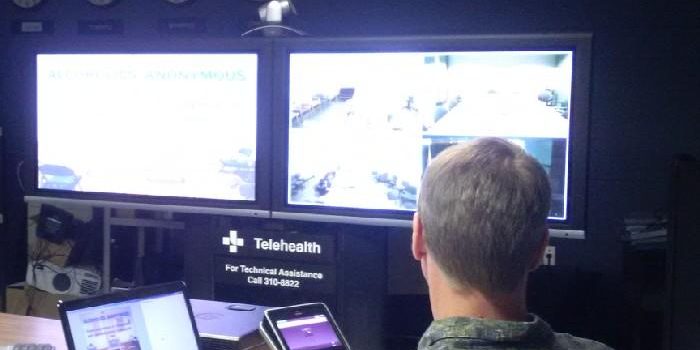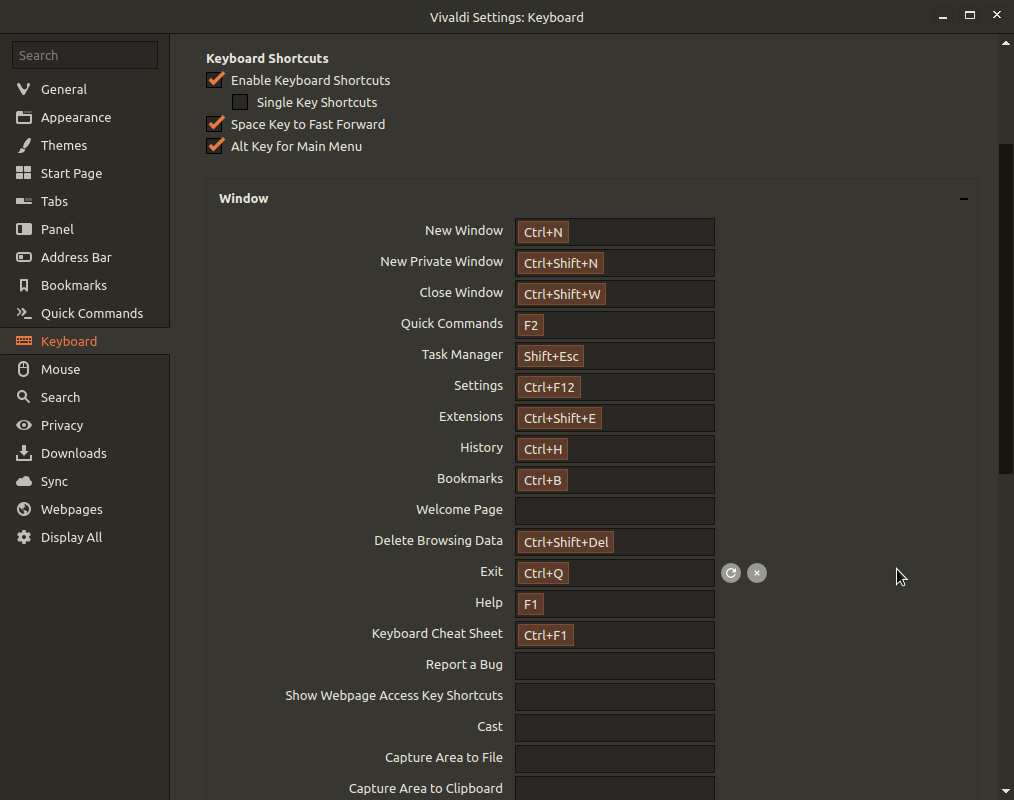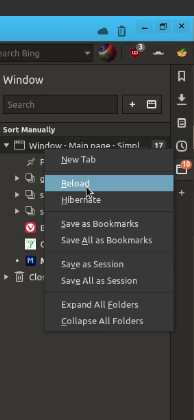 At Home
At Home
Of the things I like..
Vivaldi Browser:
A browser for our friends.
I first heard about Vivaldi browser through a chat board several years ago. I really can’t remember exactly, but someone put up a link, I gave it a try, and I was immediately confused… The myriad of configuration options, the new and unheard of features, the entirely different layout… It was overwhelming, but not enough to dissuade me.
At the time I was interested in other browsers simply because Firefox – whom I had been using for many years – was beginning to incorporate changes I just didn’t like which were annoying enough to me to cause me to look. Regardless of specifics, they were turning up the ‘suck’, right around the time Vivaldi browser came out.
Through the few tutorials I chanced to graze I could see it becoming quite useful, if only I could learn to use it. Tabbed browsing? Pfft… sooo… Tab stacking… WTF is that? Web panels? Bla bla bla… Please, just tell me where the bookmarks are, and is there an ad blocker to get me going?!? With all the bells and whistles I saw right off the hop, it was just too much!!!
Like my digital camera, it took great pictures, but had an instruction manual an inch thick explaining the One Million Things it did. The major difference, though, was that I actually had desire to climb this learning curve — just not all at once. The land of much promise made me want to change, and so began the uprooting years of habit and comfort I had with Firefox, if only just a bit at a time.
Once or twice a week I’d play with it, poking around in the settings, taking bites here and there, until eventually I had it set up in a comfortable configuration not too far off from Firefox. Here, the same general synapses could fire to get most jobs done without banging my head against “new” every step of the way, and I could incorporate tidbits as I went.
Acclimating to the panel on the side was perhaps my greatest hurdle. Getting used to an entire panel on the right (or left for you weirdos) with the various features previously found up top, took me some time, and once I did, that is where I stayed for some time. Right there… oh yeah.
Six months probably went by like that until I got frustrated with the small screen space on my laptop and began using f11, and that was the move that brought on the next leg of learning for me.
While the extra screen space was nice, I now had no url window, and so found that f8 would bring that up. Then I found I could create nicknames for my bookmarks, either as I created them, or on the bookmarks page (ctrl + b), and together with f8 I could bring up www.zerohedge.com with f8+”ze”+enter. Boom. Noyce. I didn’t even have to move my hand… colour came into my world.

And that’s is the thing with Vivaldi. Keyboard shortcuts gallore. It’s not like there are just a few standard ones either, there are, well, more. For virtually every shortcut I have wanted, there either was one, or I could simply create it. Slowly at first, then rapidly as they became more useful to me, I began to incorporate keyboard shortcuts into my browsing –and wondering how I ever got by without them. I even thought about printing out the shortcuts page, but decided against it as adding one at a time to my repertoire worked better for me.
I went through periods where I forgot nearly everything, but eventually muscle memory took over and browsing as I wanted, where I wanted, became fluid. Once there, I wanted to learn how to put this browser to work.
Sessions, stacked and tiled tabs
My most recent learning curves surround the tab stacking and tiling that seemed such a mystery to me at the start, which wasn’t so much a mystery of their use, but one of why I would want to use them in the first place. Well, that made itself evident once a bell went off… notably, the opening bell.

What you see above is a saved session of stacked and tiled tabs, which, to me, is one busy page, and seems to me precisely the sort of thing this browser to be made for. I have used sessions before, but the tiled page makes this simply awesome. The following are the steps to create it.
- Create three bookmark folders, one for each tab.
- Place the bookmarks (charts) you want in each folder.
- Right click each bookmark folder and select “Open in New Tab” – this opens them all in new tabs.
- After each folder right click on a tab up top and select “Stack
Tabs by Host” – I use this because they are all from the same site - Once I had three stacked tabs, I then right click each tab and select “Tile Tab Stack” to create the grid.
- Then holding down ctrl and double click each tab to highlight them

- Right click one tab and select “Save Tabs as Session”
- Give the session a name, and voila!
To open, you can use the “file” button on the menu, but that wasn’t easy quite enough, so I created a shortcut to open saved sessions (ctrl+alt+o). Now, ctrl+alt+0 > down arrow > enter will open that page, and you can scroll between those tabs with ctrl+1 for tab 1, etc.. Find me another browser that does that! Get this rolling on Linux with the compiz cube for multiple screens and you’ll hear some oohhhs, and ahhhhs…

What IS missing, however, is a shortcut to refresh all tabs in a session, but this was made possible with f4 and a right-click on the open tabs line. You will find “reload”, which is handy enough until they address this in an upcoming snapshot. Snapshots are discussed further down the page, but not before…
Web Panels

Now, I don’t bother with Twitter or Messenger, or any of the other social networking traps, but if you are watching someones Twitter feed, that’s a good example of what the web panels are for. You can easily see how it can be used for a chat window as well, maybe while gaming, IDK… doesn’t matter much to me, but yeah, I can see it being the bomb for some.
Notes
This is a useful feature for programmers, which I have used (I’m no programmer, tho) to hold little snippets of code I would otherwise forget, or have to dig out. Other uses became obvious, and I once had a little compendium gathered, but upon exploration of the sync function all hell broke loose. Now, unfortunately, my notes have multiplied like rabbits across my various devices, and purging a brood of duplicates on one device only sees them replicate from another, until there are copies upon copies of copies. Clearly, gathering all these devices together to purge them all is the solution, but you are not taking into account the level of sloth which envelopes this writer. I can be busy as a bee, so long as I don’t have to move… and so it remains: a back-burner issue I’ll get to one day, and if history with this browser is any indication, I’ll probably wonder how I ever got by without it…. Truthfully though, I’m hoping for more granular control of panel items to be developed in a snapshot of the future, as I can’t be the only one experiencing this.
Sync

With that said as into, the Sync function of Vivaldi is useful as hell. Bookmarks, passwords, and yes, notes (damn, you can turn that off?) all get sync’d between devices. To set sync up, you create a username. and “sync” encryption password, and your checked information is encrypted and uploaded to their sync server. Changes are passed from device to device by signing into sync, and the up/download process happens in the background on an unknown interval. I don’t know what settings actually get transferred, but do know that a fresh install doesn’t pick up your layout from other installs, a least not in the time it takes to set it up manually. Further adding to the feature set is multiple profiles complete with avatar. You can create different profiles for each user, like seat positions in a car. Real cruise control. I haven’t messed with this much. You see what happened with notes….
One annoyance is that a fresh install will sync all the default bookmarks across all your devices if they are not deleted first, which is a lesson learned soon enough. More multiples of multiples…
Snapshots
These can be found if you goto Vivaldi’s home page and scroll right to the bottom. Under “News” you’ll find their snapshots, which are versions that offer new features in beta, which sometimes don’t work, but most often do or are well on the way. If you like that sort of thing, this is the update channel for you, and the one I use.
Themes

A “gee whiz” feature of Vivaldi is scheduled themes, where you can select different themes depending upon the time of day, and as well, your themes will pick up the colour scheme of whatever website you are visiting. I honestly forget where that setting is… there are just so many. Look closer, and there is a
“Philips Hue Theme” that integrates with their networked light bulbs. Yeesh! Geekorama!
What else can I say about this? I haven’t mentioned the free e-mail address you get when you create an account. It is RoundCube based, perfectly functional, set up for encryption, and only lacking a calDAV calendar (subscribe only) to make it fully functional. It’s simplicity, in relation to say YahooMail, cannot be overstated. Here, the SUCK knob is on zero. Mail, and that is all.
For registered users, there is also free blog-space provided to express yourself. Some examples are found here –> https://vivaldi.net/bloggers/ If registered, you need only activate it, and for those of you wishing to learn a little bit about WordPress, this is the place to be. They don’t offer all the options you can get your fingers on with WordPress.org, or even the .com version, but the price is certainly right, and it’s a good place to get your feet wet with the rather frustrating Gutenberg editor and it’s quirks. If anything, it will show you why you need to learn at least a little bit of code….
Lastly, but not least importantly, is the support community which has grown up around this wonderful browser. Whenever I have been stumped on something, this is where I go, and the fact that I haven’t had to post anything in the forums yet is a testament to there being answers to all I’ve had to look for. Flaming, and the like, are virtually non-existent there, and perhaps that’s a by-product of being developed by the folks in Iceland, which is an island nation of, well, not very many people, where they have had to learn the value of getting along with one another, as well as the rest of the world.
